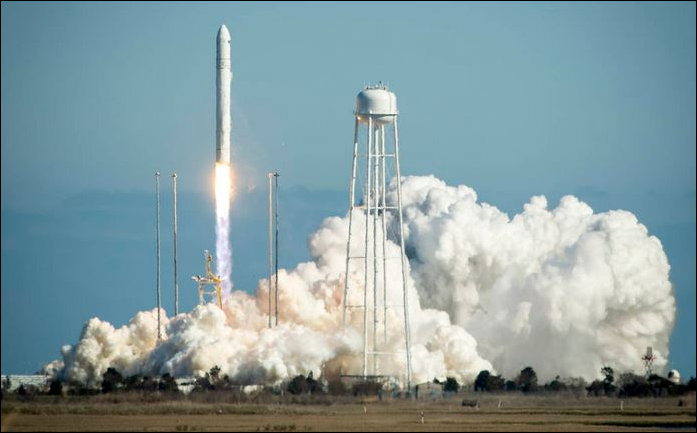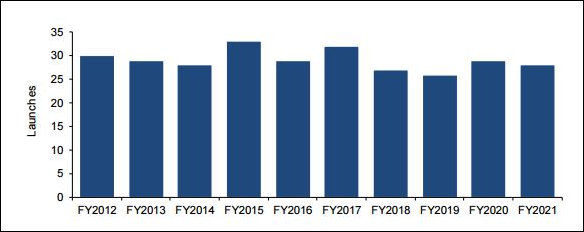by James A. Bacon
The McAuliffe administration has settled a dispute with Orbital Science Corp. over insurance of the Mid-Atlantic Regional Spaceport (MARS) at Wallops Island. Orbital, which is in the business of launching payload into orbit, will reimburse the state for one-third of the $15 million in damages incurred by the spaceport when Orbital’s rocket exploded during lift-off in October, and it will cover the cost of insuring future launches, the Richmond Times-Dispatch reports.
Reaching a settlement is critical to the future of the spaceport, to Orbital and to Virginia’s long-term economic future. The Fairfax County-based company is Virginia’s local space champion in a business where high-flying entrepreneurs from California, Texas and Florida predominate. In 2012, when the commonwealth published a strategic plan for the spaceport, Orbital was one of the top ten largest U.S. space system and launch vehicle manufacturers, with more than $1 billion in annual revenue.
This may sound excessively Buck Rogers, but I regard the spaceport as critical infrastructure for Virginia’s long-term future. One day, the launch facility could well be the nucleus of a massive space-based industrial complex and seen as vital to the state economy as Virginia’s rail or highway system. At least it will if we can nurture it through the embryonic phase of the space industry in the face of stiff competition — MARS was only one of eight FAA-licensed commercial space launch facilities in the country in 2012.
Building a world-class space industry in Virginia will take patience. The forecast for commercial space launches, though steady, is not exactly booming in the near term:
Right now the market is dominated by NASA and the mission of providing logistical support to the International Space Station. But space-based activity is growing. The strategic report notes the need for:
- Fixed satellite services: high definition television, Internet connectivity and very small aperture terminal satellites (which serve homes and businesses).
- Direct broadcasting services
- Broadband services
- Hosted payloads: experimental payloads, technology demonstrations, scientific missions, remote sensing, weather and climate monitoring and national security.
An important emerging market is space tourism. Longer run, we can expect to see more defense-related applications, not just satellites but weapons systems. Futurist George Friedman envisions “battle stars” in geosynchronous orbit armed with hyper-missiles to rain down upon our enemies. The potential exists for specialized manufacturing processes using the unique properties of space such as microgravity and perfect vacuum, as well as vast solar arrays that microbeam energy to earth. A step beyond would involve mining the Moon for He-3 isotope in the lunar regolith, a likely fuel for fusion power. All of these activities will require a supporting space-based (or Moon-based) infrastructure for support. Looking even further out, it is not far-fetched to imagine commercial and religious colonies establishing themselves on the Moon to emancipate themselves from oppressive earth-bound political systems, much as 17th-century colonists sought refuge in the New World.
Earth-based spaceports will emerge as critical entrepots for all of this activity. Those that establish themselves early will enjoy a major competitive advantage by attracting corporate investment, evolving business ecosystems and building economies of scale for supporting infrastructure.
It may take another century for the full potential to emerge. But our children’s children will thank us for staying the course.




